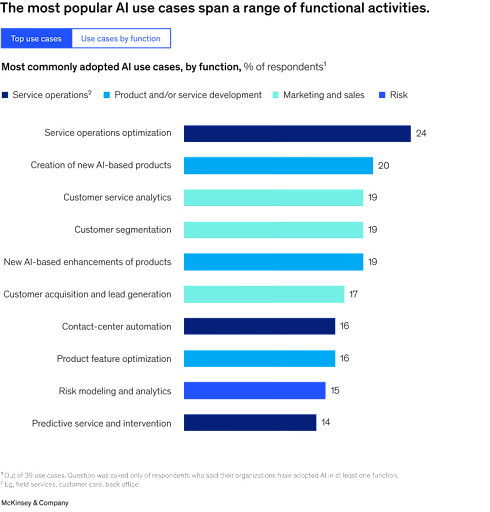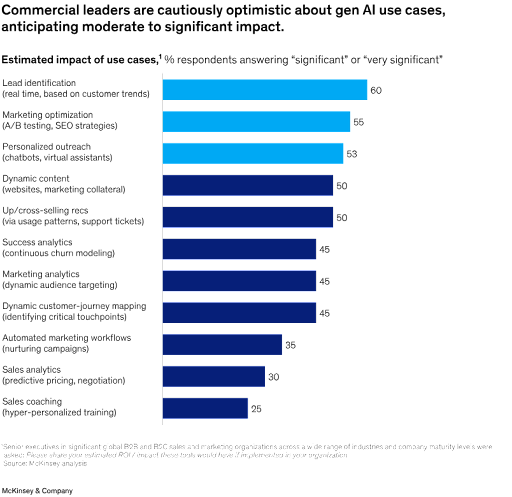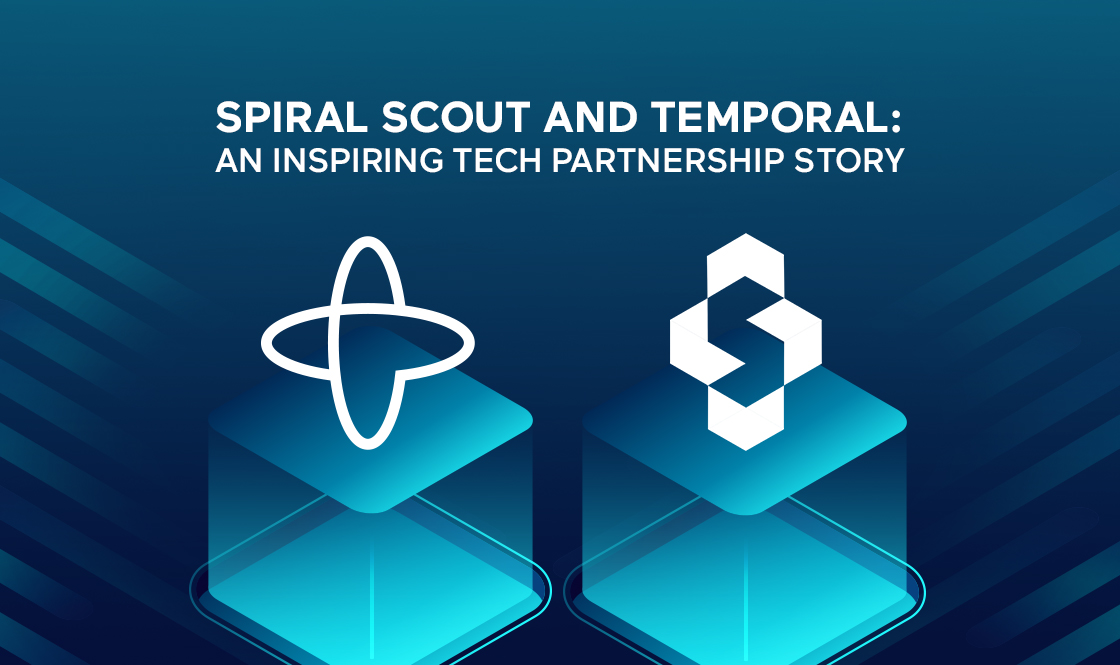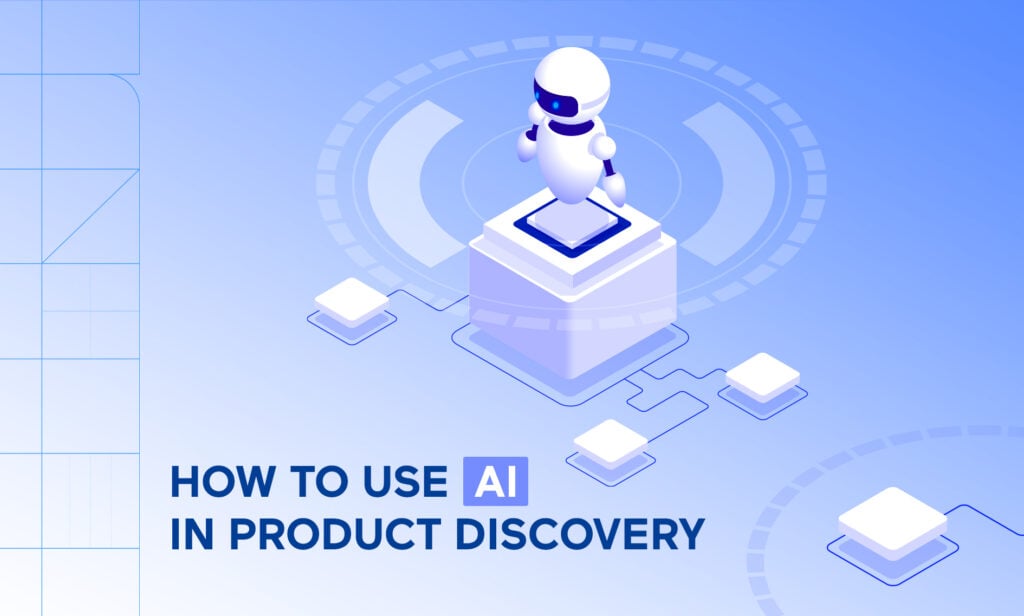
AI-powered tools are reshaping product discovery, helping teams move faster from insights to validated concepts. By using AI-powered market research tools, AI-powered analytics tools, and some of the most powerful AI tools available today, product teams can uncover trends, analyze user behavior, and prototype ideas with greater accuracy and speed. This article breaks down how to leverage AI across every stage of product discovery — from research to ideation, testing, and design.
The impact of AI technology on marketing and sales has been revolutionary. With the advent of generative AI, the way B2B and B2C players approach customer experience, productivity, and growth is poised to be disrupted in a major way.
AI has revolutionized the way companies approach product discovery. By harnessing AI-powered tools and methods, companies can quickly identify new opportunities, anticipate customer needs, and ensure their products remain at the forefront of the market.
In this article, we’ll explore how organizations can adopt technology and use AI to streamline their product discovery process with greater accuracy and improved efficiency.
Exploring Market Trends
To launch successful products, it is crucial to have a comprehensive understanding of the market. Unleashing the power of AI makes it possible to confidently identify emerging trends and opportunities in a target market and create a superior product during product discovery.
AI technology is useful for obtaining information on market trends and demand patterns much more quickly than traditional methods. By extracting information from large volumes of raw data, AI can transform it into useful insights for product teams. With the help of AI, it is possible to analyze both structured and unstructured data collected from various sources, including social media posts and comments, information from questionnaires and surveys, online reviews, industry reports, and whitepapers.
Integrating AI technology in market research can aid in making data-driven decisions and developing products that align with your target audience. AI-powered tools can analyze digital text to determine the tone and sentiment of the target audience towards your product, whether it is positive, negative, or neutral. With this information, refining and adapting marketing messaging to the audience’s mood can become easier.
The role of AI in market research is expected to expand significantly in the coming years, further enhancing the capabilities of product teams.
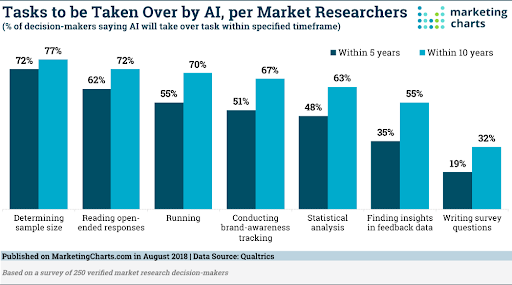
Utilizing AI for competitive analysis is also a powerful tool for a successful product discovery phase. By monitoring competitors’ activities, product releases, customer feedback, and pricing strategy changes in real-time, AI-powered tools can provide valuable insights into their strengths and weaknesses. This allows for a deeper understanding of the competitive landscape and enables companies to react quickly to changes, ultimately positioning them ahead of the market.
Tracking User Behavior Patterns
The ultimate goal of the product discovery phase is to create a product that meets the needs of your users. AI-driven tools can analyze customer feedback, preferences, and behaviors to gain a better understanding of your target audience. These insights can help your product team identify unmet needs, refine existing products, and develop new offerings that truly resonate with customers.
AI tools enable behavioral analysis to be performed at scale. By tracking user behavior and interactions with a product in real-time, product managers can utilize AI to identify patterns, pain points, preferences, and areas for improvement. AI-powered user behavior analysis is particularly useful for continuous product discovery, as it allows for tracking of user interactions across all platforms and regular touchpoints to continuously meet user needs.
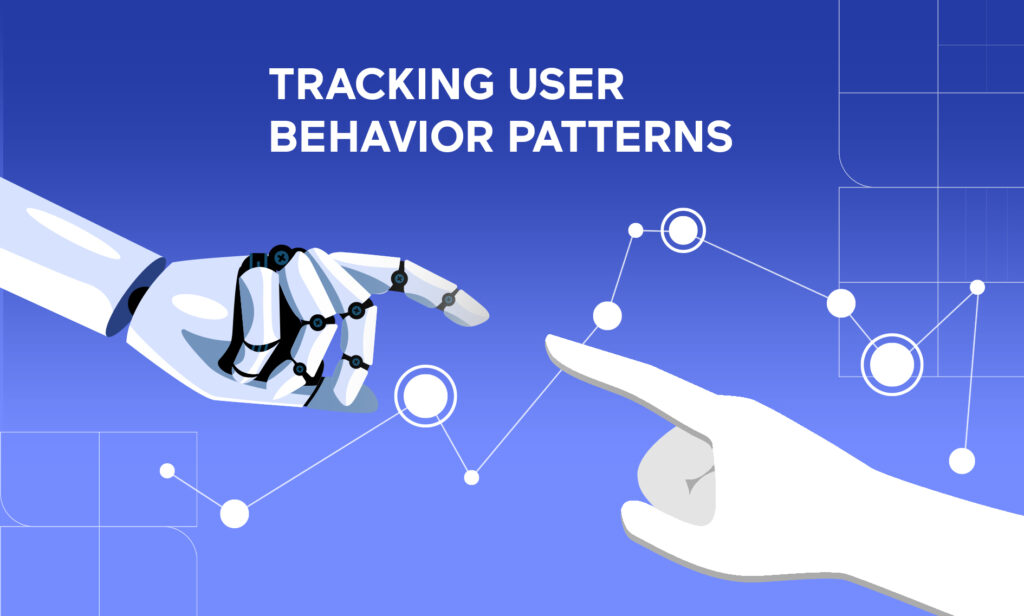
For example, Netflix uses AI/ML data to provide personalized recommendations based on the user’s preferences and watch history. As a result, Netflix offers a great selection of shows and movies that their users may enjoy watching. Thus, incorporating an AI algorithm that can analyze user behavior and personalize their experience with your product is an excellent idea. Amazon is now using artificial intelligence to give shoppers a brief summary of customer reviews and point out the advantages and disadvantages of products, as reported by reviewers.
Companies can utilize AI-powered natural language processing to analyze large amounts of user feedback, reviews, and support tickets. This analysis can help identify common pain points and feature requests. Insights gained from this process can then be used to prioritize product improvements and guide the development of new features that address users’ needs. These insights are particularly useful for continuous product discovery, especially when product teams have to go through lots of feedback on a regular basis. Thorough work with the feedback can also solve problems with a product before launch. Otherwise, the company can run the risk of launching a faulty product and delivering a poor user experience.
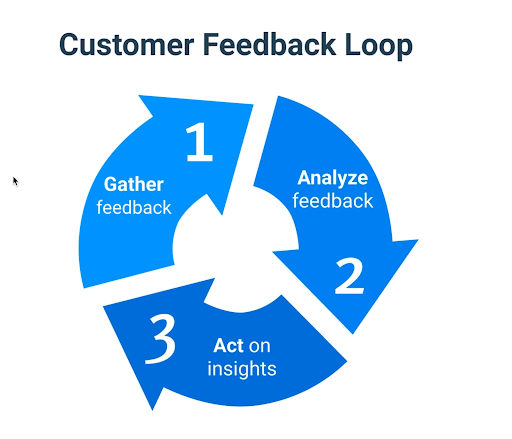
It is important to take both negative and positive feedback into consideration. Even negative feedback should be embraced, as suggested by marketing specialist Neil Patel in this article, and can be used to your advantage. According to a study by Power Reviews, 97% of consumers read product reviews before making a purchase decision, and 85% of consumers specifically look for negative reviews to make informed decisions. Hence, one can assume that negative reviews might actually motivate other consumers to try a product.
AI tools have limitations, but they are constantly evolving. This is where human review is helpful for interpreting nuanced feedback. Nonetheless, AI tools considerably accelerate the analysis process, freeing up loads of time to tackle other important tasks.
Optimizing Ideation Process
Ideation is a crucial part of product discovery, as every product or feature begins with an idea. AI tools can be a valuable resource to boost creativity and generate ideas throughout the discovery process.
AI has the capability to simplify the process of generating and validating ideas by analyzing data to identify potential product opportunities and assess their feasibility. With the help of AI, organizations can validate product ideas, reducing the risk of investing in products that may not attract their target audience.
One of the benefits of using tools in product discovery is that they are free of biases that can harm your product from the start. With AI tools, you can generate unbiased and neutral ideas based on objective criteria. This can help you create a product that better meets your users’ needs, which is the essence of product discovery.
A good starting point for ideation is to open an AI chatbot like ChatGPT or Bard and ask it to come up with feature ideas. Within seconds, you will have a list of suggestions to discuss with your team. Think of AI tools as creative assistants that can complement human creativity. They can analyze large amounts of data and provide data-driven suggestions, helping you generate ideas and concepts relevant to your users.
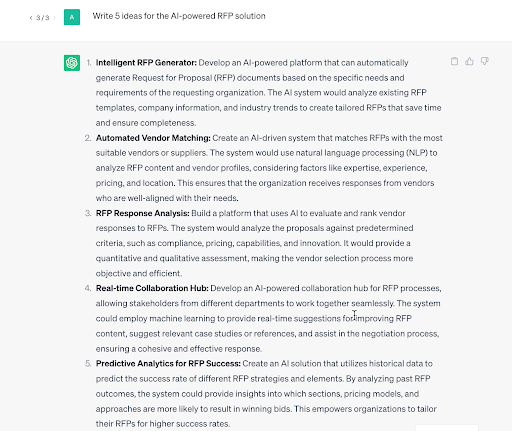
To achieve innovation, it’s important to think beyond traditional approaches and explore unconventional avenues. The true potential of AI is to enhance and support human thinking, rather than replace it. While AI is based on existing data and patterns, a collaborative effort between AI and human creativity is crucial for striking a balance between incremental and radical innovations. By combining the advantages of both AI and human thinking, companies can reach higher levels of originality and creativity.
Empowering Prototyping and Testing
Prototyping and testing are critical stages in the ideation process. AI can greatly accelerate these stages by creating virtual environments and simulations. These simulations allow product teams to visualize the potential impact, feasibility, and limitations of their ideas before committing substantial resources. By reducing the time and cost associated with physical prototyping, AI technology empowers innovators to iterate and refine their ideas more rapidly.
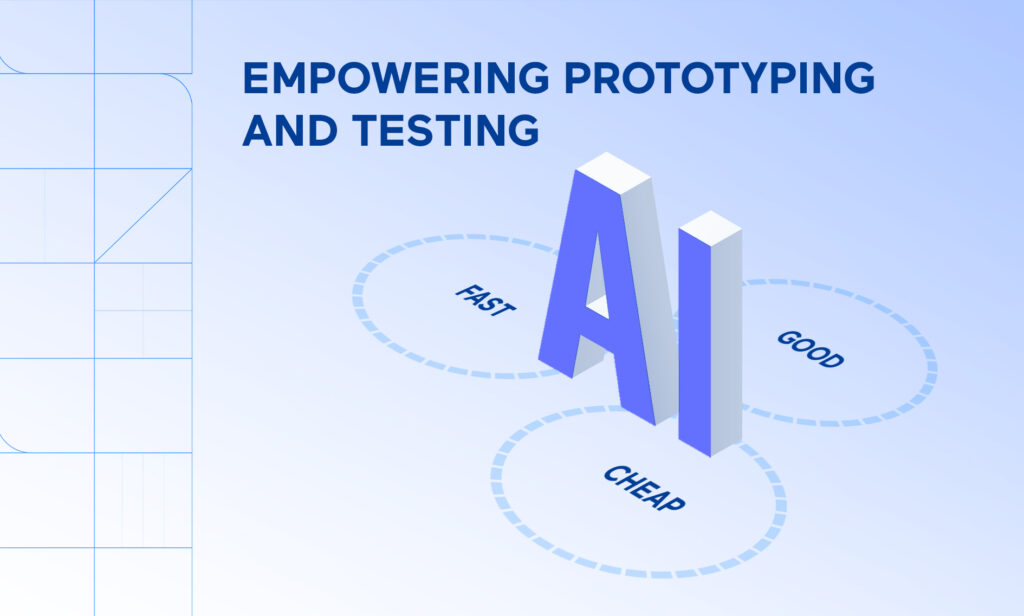
Organizations can speed up their time to market, cut development costs, and minimize the risk of failure by taking advantage of AI-driven prototyping and testing tools. For example, a company can use AI-powered simulation and testing tools to assess the performance of new hardware designs, identify potential issues, and optimize their designs before investing in costly physical prototypes.
AI in product development can significantly enhance the prototyping stage by improving process efficiency. For instance, it can automate tasks, propose new design approaches, analyze material options, test prototypes, and provide recommendations based on project parameters.
By embracing a collaborative approach in which AI acts as an augmenting tool rather than a replacement, organizations can harness the benefits of both human creativity and AI’s analytical power to unleash the full potential of the prototyping stage.
AI-Driven Design Stage
Product design is a crucial activity during product discovery. AI tools such as Midjourney or Dall-E 2 have revolutionized the way designers work by helping them visualize and iterate on ideas more effectively.
Using AI-powered tools in the design process offers several benefits. One of the main advantages is the automation of repetitive tasks. According to an Adobe survey, 74% of surveyed creative professionals spend more than half of their time on tedious, uncreative tasks
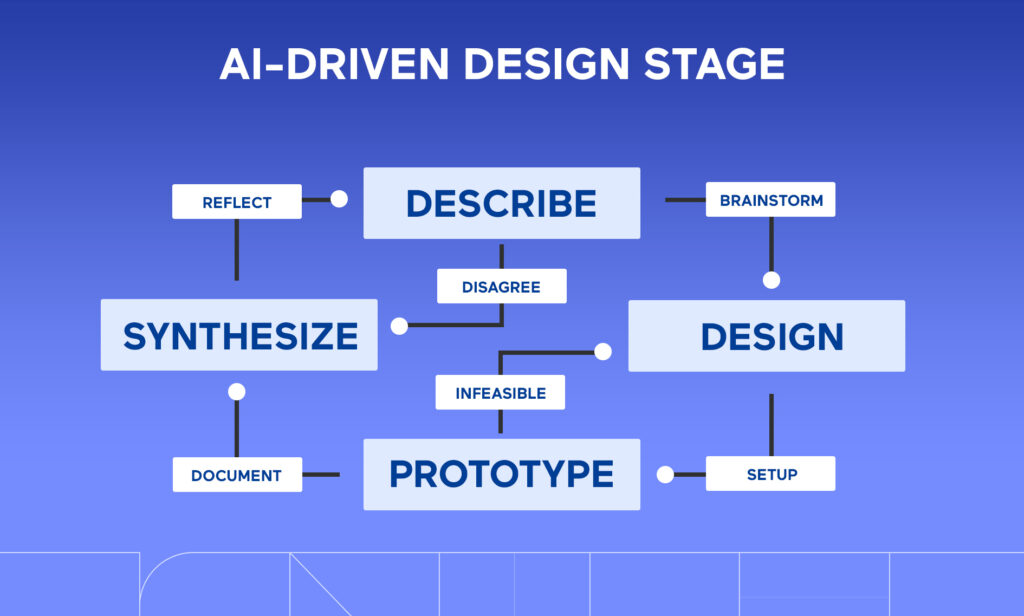
Designers can now use AI-powered design tools to generate screen layouts and optimize color schemes automatically. These tools produce results almost instantly, with the designer only needing to input the correct parameters. This frees up designers to focus on higher-level creative decisions, which ultimately leads to a better final product. Additionally, designers can experiment with AI generative design tools to explore a wide range of design options quickly.
Another effective way to utilize AI-powered tools is through pattern recognition. These tools can analyze vast design datasets and identify patterns and trends, enabling you to create designs that align with current trends and user preferences. Additionally, AI tools can streamline workflow and assist in generating ideas quickly. As a result, the product discovery process is optimized and expedited, allowing you to bring your product to market more quickly.
Designers can speed up and diversify the process of generating and iterating ideas by using AI as a collaborative brainstorming tool. With human designers providing guidance, AI can instantly generate and visualize new ideas. It can then quickly explore possible variations to ultimately enhance design outcomes.
While AI can assist in the visual design process, human designers are still essential in incorporating design thinking and empathy into the process. This ensures that the resulting products meet user needs and provide an exceptional user experience.
In Summary
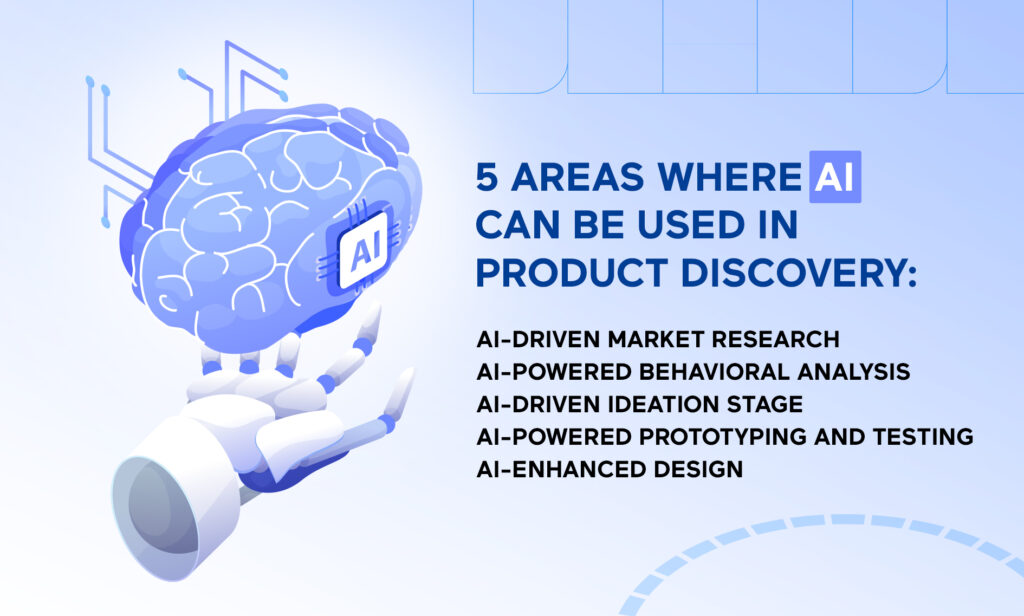
AI is not a cure-all solution for all of product needs, despite what some tech visionaries may claim. However, it can still be incredibly beneficial when used correctly. AI tools are a game-changing innovation that can significantly speed up the product discovery process. By using AI-powered tools in product development, product folks can spend less time on repetitive tasks during discovery and focus on more important tasks, resulting in a product that better meets their users’ needs.
This post covers 5 areas where AI can be used in product discovery:
- AI-driven market research
- AI-powered behavioral analysis
- AI-driven ideation stage
- AI-powered prototyping and testing
- AI-enhanced design
It is important to note that AI technology should not be used as a replacement for human judgment. Although AI can generate a variety of ideas, offer useful insights, and quickly produce analyses, it is ultimately up to the human product development team to guide and supervise AI’s exploration and output. The human team must interpret the output of AI by taking into account the context, their own experiences, and the best practices in the field of product development.
By thoughtfully and responsibly leveraging the power of AI in product discovery, we can create innovative products more quickly and cost-effectively that meet the needs of our clients and end-users. Product teams can stay ahead of the competition, better fulfill customer needs, and ensure the long-term success of their products by utilizing AI-driven analytics, competitive analysis, customer insights, idea validation, and rapid prototyping.

